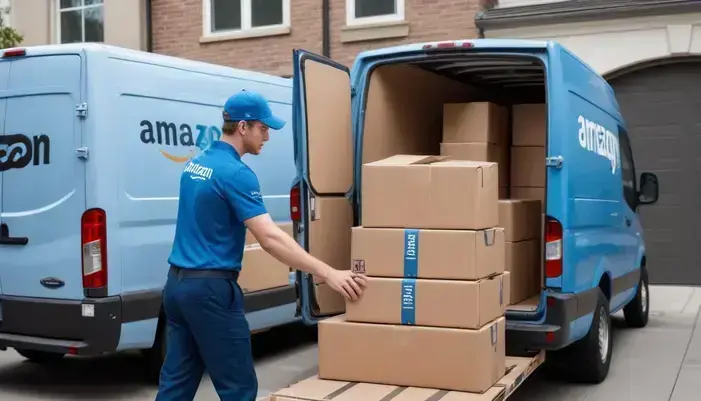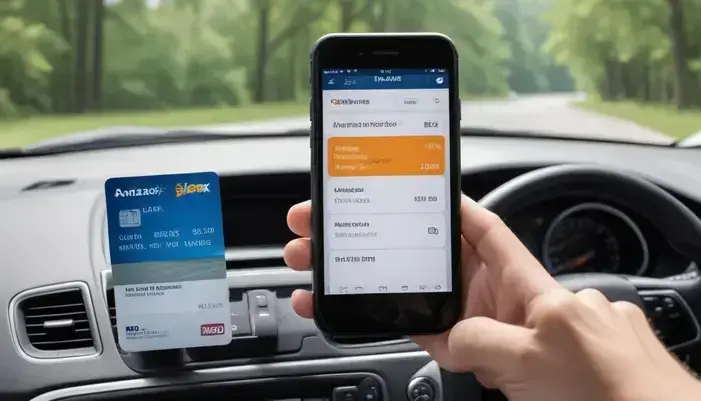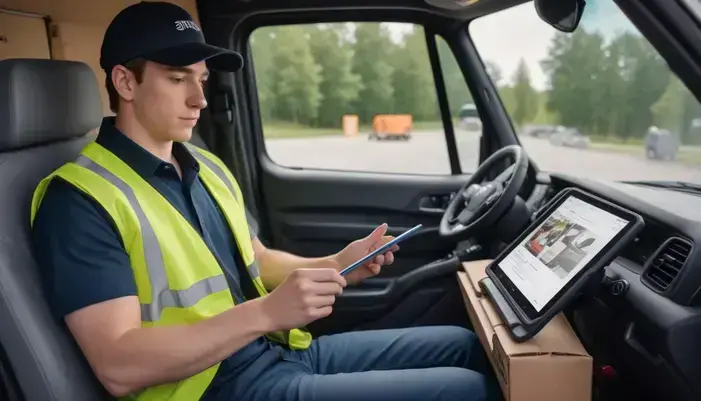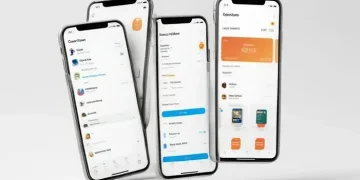How to Work as an Amazon Delivery Driver: Requirements Explained

Thinking about becoming an Amazon delivery driver? You’re not alone – with flexible hours and competitive pay, this gig has become increasingly popular. But what exactly does it take to land this job and start earning? Let’s break down the essential requirements you’ll need to meet.
Basic eligibility requirements for Amazon delivery drivers
To become an Amazon delivery driver, you’ll need to meet several basic requirements before you can start delivering packages. First and foremost, you must be at least 21 years old with a valid driver’s license that’s been active for a minimum of one year. Amazon takes safety seriously, so having a clean driving record is essential – typically no major violations in the past three years.
Legal Work Status and Background Check
You’ll need to prove you’re legally eligible to work in the United States, which means providing proper documentation during the application process. Amazon will conduct a thorough background check that examines your criminal history, driving record, and employment verification. This process helps ensure the safety and security of both customers and the Amazon delivery network.
Physical Requirements and Availability
Delivery driving involves significant physical activity, including lifting packages up to 50 pounds, walking up and down stairs, and being on your feet for extended periods. You should also have flexible availability since delivery shifts often include early mornings, evenings, and weekends – especially during peak seasons like holidays.
Meeting these basic eligibility requirements is your first step toward joining Amazon’s delivery team. While the standards might seem strict, they’re designed to maintain the quality and reliability that Amazon customers expect from their delivery service.
Age and background check specifications
Amazon has specific age requirements and background verification processes that all delivery driver applicants must meet. You must be at least 21 years old to qualify for any delivery position, whether through Amazon Flex or DSP partnerships. This age requirement ensures drivers have sufficient driving experience and maturity for the responsibilities involved.
Background Check Details
The background investigation examines several key areas of your history. Amazon reviews your criminal record for the past seven years, looking for any felony convictions or misdemeanors involving violence, theft, or drugs. Your driving history gets particular attention – they typically require no DUI/DWI convictions in the past seven years and check for multiple moving violations or at-fault accidents.
What the Check Covers
The comprehensive background check includes national criminal database searches, county criminal records, motor vehicle records, and social security number verification. Amazon uses third-party screening companies to conduct these checks, which usually take between 2-5 business days to complete. Some minor infractions might not automatically disqualify you, but serious violations typically will.
If you have concerns about your background, it’s best to be upfront during the application process. Many applicants worry unnecessarily – the system evaluates each case individually, considering the nature, severity, and recency of any issues found during the screening.
Valid driver’s license and driving record standards
Your driving credentials are among the most critical requirements for becoming an Amazon delivery driver. You must possess a valid U.S. driver’s license that’s been active for at least one year, though some positions may require two years of driving experience. The license must be current and not suspended, revoked, or expired at any point during your application process.
Driving Record Requirements
Amazon maintains strict standards for driving records to ensure safety and reliability. Typically, you cannot have more than three moving violations in the past three years, and no major violations like reckless driving, hit-and-run, or driving with a suspended license. Your record should show no at-fault accidents involving injuries or fatalities within the past three years.
License Class and State Requirements
For most Amazon delivery positions, a standard Class C driver’s license suffices. However, if you’re driving larger vehicles for DSP partners, you might need additional certifications. Your license must be issued by the state where you’ll be working, and you’ll need to provide proof of insurance if using your personal vehicle for Amazon Flex deliveries.
Amazon regularly monitors driving records even after hiring, so maintaining a clean record is essential for ongoing employment. If you’re unsure about your driving history, consider obtaining a copy of your motor vehicle report from your state’s DMV before applying to understand exactly what Amazon will see during their screening process.
Vehicle requirements for Amazon Flex drivers
If you’re considering Amazon Flex, your vehicle must meet specific standards to qualify for delivery work. For standard package deliveries, you’ll need a mid-size sedan or larger vehicle with four doors and enough cargo space to handle multiple packages. SUVs, minivans, and crossover vehicles often work best because they offer more flexible storage options.
Vehicle Age and Condition Standards
Amazon typically requires vehicles to be 20 years old or newer, though this can vary by location. Your car must be in good working condition with no significant body damage, functioning air conditioning and heating, and reliable brakes and tires. All vehicles must pass a basic safety inspection, and you’ll need to provide proof of registration and current insurance.
Vehicle Type Options
Amazon Flex offers different delivery categories with varying vehicle requirements. For standard package deliveries, most cars will work, but for Amazon Fresh or Prime Now deliveries, you’ll need a vehicle that can maintain proper temperatures for groceries. Larger vehicles like trucks or vans might be necessary for some delivery blocks, especially during peak seasons with oversized items.
Before starting, download the Amazon Flex app to see specific vehicle requirements in your area. The app will guide you through the vehicle verification process, which includes submitting photos of your car from multiple angles and documenting your license plate, VIN, and insurance information for approval.
Insurance coverage you’ll need

Proper insurance coverage is non-negotiable for Amazon delivery drivers, whether you’re using your personal vehicle or driving an Amazon-provided van. For Amazon Flex drivers using their own cars, you must maintain personal auto insurance that meets your state’s minimum requirements. Amazon provides commercial liability insurance while you’re actively delivering, but this only covers periods when you have packages in your vehicle.
Understanding Amazon’s Contingent Coverage
Amazon offers contingent commercial auto liability insurance that activates once you accept a delivery block and lasts until you complete your route. However, this coverage only applies after your personal insurance has been used first. It’s crucial to understand that your personal policy remains primary, so you’ll want to ensure you have adequate coverage limits to handle potential claims.
Recommended Additional Coverage
Many experienced delivery drivers recommend increasing your personal insurance limits or adding ride-share endorsements if available in your state. Comprehensive and collision coverage can protect your vehicle from damage during deliveries. For DSP drivers using Amazon-branded vans, the company typically provides full commercial insurance, but you should verify coverage details with your specific employer.
Always keep proof of insurance in your vehicle and update your insurance information promptly in the Amazon Flex app if anything changes. Review your policy carefully to understand any exclusions related to commercial use or delivery activities, as some standard personal policies might not cover accidents that occur while working for delivery services.
Physical fitness and lifting capabilities
Amazon delivery work demands significant physical activity throughout each shift. You should be prepared to lift packages weighing up to 50 pounds regularly and navigate various delivery environments. Most drivers handle between 200-300 packages per shift, requiring constant bending, lifting, and walking throughout residential and commercial areas.
Daily Physical Demands
A typical delivery day involves climbing stairs, walking long distances between stops, and repeatedly loading and unloading packages from your vehicle. You’ll need sufficient stamina to work 4-6 hour shifts with minimal breaks, often in varying weather conditions. The job requires good balance and coordination when carrying multiple packages or navigating uneven pathways to customer doors.
Essential Physical Capabilities
Successful drivers maintain the ability to stand for extended periods, bend at the knees properly when lifting, and maintain grip strength for handling packages of different sizes. You should be comfortable working in both extreme heat and cold, as delivery continues regardless of weather conditions. Proper lifting techniques become crucial to prevent injuries when handling heavier items throughout your route.
While you don’t need athletic-level fitness, maintaining general physical health helps tremendously. Many drivers find that wearing supportive footwear, staying hydrated, and using dollies for heavier packages makes the physical demands more manageable. The constant activity means you’ll be getting plenty of exercise, but you need to start with a baseline level of fitness to handle the workload safely.
Technology and smartphone requirements
Modern delivery driving relies heavily on technology, and Amazon requires specific smartphone capabilities to ensure smooth operations. You’ll need an iPhone or Android smartphone running relatively recent operating systems – typically iOS 14 or newer for iPhones, or Android 8 or newer for Android devices. The Amazon Flex app demands substantial processing power and memory to function properly throughout your delivery block.
Essential Smartphone Features
Your device must have GPS capabilities, a functioning camera for scanning packages, and reliable cellular data service throughout your delivery area. You’ll need enough storage space for the app and temporary data, plus a battery that can last through your entire shift or a car charger to maintain power. The app uses significant data, so an unlimited or generous data plan is recommended to avoid overage charges.
App Functionality and Requirements
The Amazon Flex app serves as your command center for everything from accepting delivery blocks to navigating routes and scanning packages. It requires constant location access for route optimization and delivery verification. You’ll also need to enable notifications for shift offers and delivery updates. Many drivers use phone mounts in their vehicles for hands-free navigation and package scanning efficiency.
Before starting, test the Amazon Flex app in your area to ensure it works reliably with your phone and cellular provider. Some rural or remote areas might have spotty coverage that could impact app performance. Having a backup power bank and understanding how to troubleshoot basic app issues can prevent disruptions during your delivery blocks.
Application process step by step
The Amazon delivery driver application process follows a structured path that typically takes 1-2 weeks to complete. You’ll start by downloading the Amazon Flex app or visiting the Amazon Delivery Service Partner website, depending on which program interests you. The initial application requires basic personal information, driver’s license details, and answers to preliminary screening questions about your eligibility.
Document Submission and Screening
After submitting your initial application, you’ll need to provide supporting documents including a clear photo of your driver’s license, proof of auto insurance (for Flex), and vehicle registration. Amazon then initiates the background check process which examines your driving history, criminal record, and work eligibility. This screening phase usually takes 2-5 business days, during which you might receive status updates via email.
Onboarding and Training
Once approved, you’ll complete online orientation materials that cover delivery procedures, safety protocols, and using the delivery app. For DSP positions, you’ll typically attend in-person training at a local Amazon facility. Flex drivers usually complete virtual training through the app. The final step involves activating your delivery account and scheduling your first delivery block or shift.
Throughout the process, check your email regularly for updates and required actions. Some applicants experience waitlists in saturated markets, while others might need to provide additional documentation. Keeping your information current and responding promptly to requests can help move your application forward efficiently toward your first delivery assignment.
Amazon Flex vs DSP delivery partner differences
Understanding the key differences between Amazon Flex and Delivery Service Partner (DSP) programs helps you choose the right delivery path. Amazon Flex operates as a gig economy platform where you use your personal vehicle and work as an independent contractor. DSP positions involve working for third-party companies that contract with Amazon, using company-provided vehicles and following more structured employment arrangements.
Vehicle and Equipment Differences
The most noticeable difference lies in vehicle requirements. Flex drivers use their personal vehicles and cover all associated costs like gas, maintenance, and insurance. DSP drivers operate Amazon-branded vans provided by their employer, with fuel and maintenance typically covered by the DSP company. DSP drivers also receive uniforms and delivery equipment, while Flex drivers need to supply their own smartphone and data plan.
Schedule and Employment Structure
Flex offers complete schedule flexibility – you choose delivery blocks through the app when they’re available. DSP positions provide consistent schedules with set hours, often full-time with benefits potential. Flex payments are per delivery block completed, while DSP drivers receive hourly wages or salary. DSP roles may offer health insurance, retirement plans, and paid time off, which aren’t available to Flex independent contractors.
Your choice depends on your priorities: Flex provides maximum flexibility but variable income and higher personal expenses, while DSP offers stability and benefits but less schedule control. Many drivers start with Flex to test the work, then transition to DSP for more reliable income and career advancement opportunities within the delivery ecosystem.
Training and onboarding expectations

Amazon’s training process prepares new drivers for the realities of package delivery through a combination of digital and hands-on learning. The onboarding typically begins with online video tutorials covering safety protocols, delivery procedures, and using the delivery app effectively. These self-paced modules usually take 2-4 hours to complete and include knowledge checks to ensure you understand key concepts before hitting the road.
Hands-On Training Components
For DSP positions, you’ll attend in-person training sessions at local Amazon facilities, where instructors demonstrate proper loading techniques, navigation systems, and customer interaction standards. Flex drivers receive virtual training through the app, focusing on scanning packages, route optimization, and handling common delivery scenarios. Both programs emphasize safe driving practices and efficient package handling to prevent injuries and delays.
First Delivery Support
Many new drivers receive mentorship during their initial routes, either through ride-alongs with experienced drivers or additional supervisor support. You’ll learn practical skills like organizing packages by stop sequence, managing delivery timelines, and troubleshooting common app issues. The training also covers handling special situations like customer preferences, secure delivery locations, and proper procedures for undeliverable packages.
Throughout your first weeks, expect ongoing feedback and performance monitoring as you adapt to the delivery rhythm. Most drivers find they become significantly more efficient after their first 10-15 delivery blocks as they develop personal systems for organization and route management. The training emphasizes building good habits from the start to ensure long-term success and safety in the delivery role.
Typical work schedule and flexibility
Amazon delivery schedules vary significantly between Flex and DSP programs, offering different levels of flexibility and commitment. Amazon Flex provides the ultimate scheduling freedom – you choose delivery blocks through the app when they’re available, typically ranging from 2-6 hours each. These blocks appear throughout the day, with early morning, afternoon, and evening options allowing you to work around other commitments.
DSP Schedule Structure
Delivery Service Partner positions follow more traditional work schedules with set shifts, usually 8-10 hours per day, 4-5 days per week. Most DSP routes start early morning (around 8 AM) and finish in the late afternoon or early evening, though some locations offer night shifts. DSP drivers typically work the same schedule each week, providing consistency but less flexibility than the gig model.
Peak Season Demands
During holiday seasons and Prime events, both Flex and DSP drivers can expect increased hours and delivery demands. Flex drivers often see more available blocks with potential surge pricing, while DSP drivers may work extended hours and additional days to handle the volume. These busy periods can significantly increase earning potential but require greater time commitment and physical stamina.
The choice between programs often comes down to your scheduling needs – Flex works well for students, second job holders, or those needing irregular hours, while DSP suits people seeking consistent full-time employment. Many drivers appreciate that both options typically avoid overnight shifts, though early mornings are common, especially for DSP routes that need to complete deliveries by specific deadlines.
Pay structure and earning potential
Amazon delivery compensation varies between programs but offers competitive earning opportunities for dedicated drivers. Amazon Flex drivers earn $18-$25 per hour on average, paid per completed delivery block rather than hourly. Blocks typically range from 2-6 hours, with earnings deposited to your bank account twice weekly. Many drivers appreciate the immediate payment structure and potential for surge pricing during high-demand periods.
DSP Compensation Package
Delivery Service Partner employees receive hourly wages ranging from $16.50-$22, with opportunities for overtime pay during busy seasons. DSP positions often include benefits like health insurance, retirement plans, and paid time off for full-time employees. Some DSP companies offer performance bonuses based on delivery metrics, safety records, and customer feedback, potentially adding $50-$200 weekly to base earnings.
Factors Affecting Earnings
Your actual take-home pay depends on several variables including your location, experience, and efficiency. Drivers in metropolitan areas typically earn more due to higher delivery volumes and cost of living adjustments. Seasonal demand during holidays can boost earnings by 20-30% through increased hours and bonus opportunities. However, Flex drivers must deduct vehicle expenses like gas, maintenance, and insurance from their gross earnings.
Most full-time drivers report annual earnings between $35,000-$50,000, with top performers reaching $60,000+ in high-demand markets. The key to maximizing income lies in developing efficient delivery routes, maintaining excellent performance metrics, and strategically selecting high-paying blocks or shifts. Many drivers find the earning potential makes the physical demands and irregular hours worthwhile, especially when factoring in the flexibility and independence the work provides.
Ready to Start Your Amazon Delivery Career?
Becoming an Amazon delivery driver offers a flexible way to earn competitive pay while working independently. Whether you choose Amazon Flex for maximum schedule control or a DSP position for stable employment, meeting the basic requirements opens the door to this growing field.
Remember that success depends on your ability to meet the physical demands, maintain a clean driving record, and adapt to changing delivery environments. Many drivers find the work rewarding once they establish efficient routines and understand the earning potential.
If you meet the age, license, and background check standards we’ve covered, taking that first step toward application could launch your delivery career. The ongoing demand for package delivery means qualified drivers continue to find opportunities in communities across the country.






